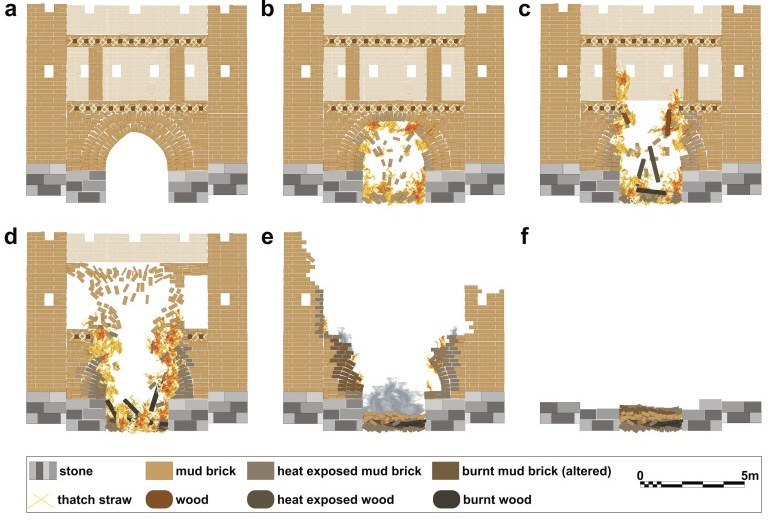A new paper, authored by M. Runjajić, Y. Garfinke, M.G. Hasel, A. Yasur-Landau, and D.E. Friesem, and titled ” Fire at the Gate of Hazor: A Micro-Geoarchaeological Study of the Depositional History of a Bronze Age City Gate” was recently published in the Journal of Archaeological Science: Reports.
The City of Hazor is one of the most significant archaeological sites from the biblical period in Israel. Studies on destruction have received much attention in archaeology in recent years. Previous excavations in Hazor have suggested a major conflagration event that destroyed the entire tell site at the end of the Late Bronze Age. The present study re-examines the sedimentary sequence of one of the city’s gates located in Area K by applying a suite of micro-geoarchaeological analyses to understand the stratigraphy previously documented by Yigael Yadin (1972) and later also interpreted by Amnon Ben-Tor et al. (1989); Ben-Tor (1993, 2016); Bechar et al. (2021). In the summer of 2019, 89 bulk sediment samples were taken within squares K5 and K7 in the gate’s passage. This study aimed to understand the archaeological formation processes at the gate and interpret human activities in the Lower City gate of Hazor based on the micro-archaeological record. Laboratory work included Fourier-transform infrared (FTIR) spectroscopy to analyze sediment samples’ composition and quantify phytoliths, wood ash, and dung spherulite concentrations. The major goals of this study are: a) to study the site formation processes, based on mineralogical assemblages and activity micro-residues, of a Middle Bronze to Late Bronze Age city gate; b) to identify mineralogical- and micro-remains, as indicators for fire and destruction of the gate; c) to identify occupation surfaces within the gate and their associated micro-residues; and d) to re-examine previous interpretations of the history of the gate and Hazor in light of the micro-archaeological record.
The results confirmed Yadin’s interpretation of the occupation levels at stratum 3 (MB II-C) and 2 (LB I), but with no evidence for destruction between the strata. Those strata showed typical tell site remains, such as anthropogenic input of ash and phytoliths, indicating more or less continuous urban activity. For Yadin’s stratum 1B gate, we identified the floor, the roof, which was the main element that burnt, overlain by a thick unburnt accumulation of the second floor and final burnt debris atop. Our study also suggested a sequence of events for the fiery destruction of the gate and its collapse. The distribution of phytoliths and wood ash combined with the sediments’ composition proposes a single collapse event caused by fire from within the gate. The minimal anthropogenic record above the destruction horizon indicates possible disuse of the gate area following this major destruction event. The conclusions of this study offer new and direct evidence for the history of the gate at Hazor’s Lower City with continuous activity from the Middle Bronze into the Late Bronze Age, ending with a major and single event of destruction of the site at the end of the Late Bronze Age which was followed by its abandonment.
Click here to read the full paper.


